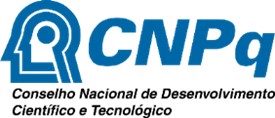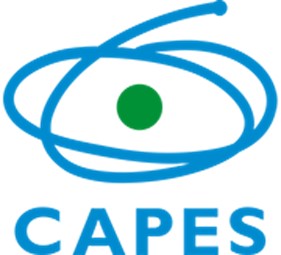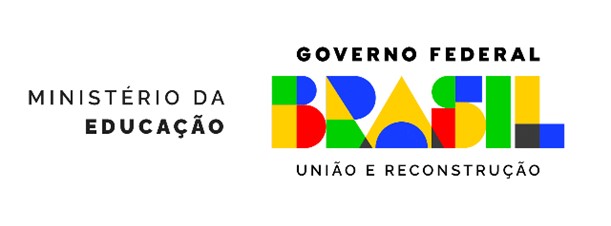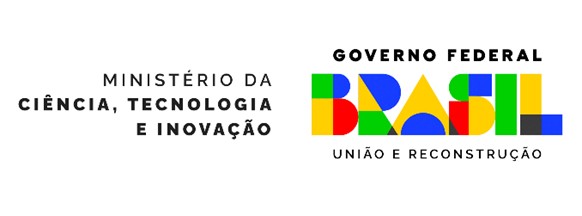ARTIGOS RECENTES
Artigo
ESTUDO DA AUTENTICIDADE DE CÉDULAS DE CEM REAIS POR ESPECTROSCOPIA NA REGIÃO DO INFRAVERMELHO MÉDIO E PRÓXIMO ASSOCIADA A MÉTODOS QUIMIOMÉTRICOS
Anna Clara F. Braz; Jandira M. O. B. Brandão; Nayara A. dos Santos ; Márcia H. C. Nascimento; Bruno M. M. Siqueira
; Márcia H. C. Nascimento; Bruno M. M. Siqueira ;
;
Paulo R. Filgueiras ; Wanderson Romão
; Wanderson Romão

The study uses infrared spectroscopy techniques to differentiate authentic and counterfeit Brazilian banknotes. Spectral data were analyzed using near-infrared (NIR) and Fourier transform infrared (FTIR) spectroscopy, then processed with Matlab, Origin and Orange.
http://dx.doi.org/10.21577/0100-4042.20250232
AVALIAÇÃO DA EFICIÊNCIA FOTOTÉRMICA DE ÓXIDOS DE GRAFENO REDUZIDOS COM DIFERENTES DIMENSÕES
Isabela A. A. Bessa; Mikaelly O. B. Sousa; Fernanda D. Marques; Elisa Q. C. da Costa; Ana Beatriz C. Souza; Dayenny L. D'Amato; Camille C. de Mello; Diego O. da Costa  ; Wilson S. Nascimento; Johnnys S. Hortêncio; Bráulio S. Archanjo; Célia M. Ronconi
; Wilson S. Nascimento; Johnnys S. Hortêncio; Bráulio S. Archanjo; Célia M. Ronconi

Different exfoliation methods were applied to obtain reduced graphene oxide (rGO) with varied lateral sizes. Photothermal studies under near-infrared (NIR) irradiation showed efficient heat generation. Sheet size had minimal influence on the photothermal performance.
http://dx.doi.org/10.21577/0100-4042.20250231
NOVEL DIHYDROPYRIMIDINE-THIONE DERIVATIVES AS CHOLINESTERASE INHIBITORS TARGETING ALZHEIMER'S DISEASE: ADVANCED STRUCTURAL CHARACTERIZATION, COMPUTATIONAL MODELLING AND BIOLOGICAL EVALUATION
Aisha A. Alsfouk; Pervaiz Ali Channar; Aftab Ahmed; Syeda Abida Ejaz  ; Aamer Saeed; Tahira Shamim; Rabail Ujan; Hammad Ismail; Michael Bolte; Ulrich Florke; Tuncer Hökelek
; Aamer Saeed; Tahira Shamim; Rabail Ujan; Hammad Ismail; Michael Bolte; Ulrich Florke; Tuncer Hökelek

The newly synthesized crystal of dihydropyrimidine-thiones were evaluated as cholinesterase inhibitors targeting Alzheimer's disease via comprehensive in vitro and in silico investigations.
http://dx.doi.org/10.21577/0100-4042.20250230
O que o potencial de circuito aberto pode nos informar sobre a resistência à corrosão de ligas de alumínio?
João Victor de S. AraujoI,* ; Zehbour PanossianII
; Zehbour PanossianII ; Hercílio G. MeloIII
; Hercílio G. MeloIII ; Isolda CostaI
; Isolda CostaI

The evolution of open circuit potential (OCP) over time was monitored to evaluate corrosion resistance of aluminium alloys. Localized attack occurred even at more noble potentials. This highlights the limitations of using OCP as a standalone technique for corrosion resistance assessment.
http://dx.doi.org/10.21577/0100-4042.20250229
Scanning electron microscopy: an essential tool in the investigation of cement for oil wells
Rafael A. VenturaI; Eduardo J. C. LinsII; Júlio C. O. FreitasI; Antonio E. MartinelliII,*

The graphical abstract illustrates the use of scanning electron microscopy (SEM) to investigate oil well cement microstructures. Representative SEM images reveal hydration products, carbonation phases, and morphological changes under various conditions.
http://dx.doi.org/10.21577/0100-4042.20250227
Análise química de méis de abelhas sem ferrão nativas do brasil e suas bebidas fermentadas
Juliana M. FeresI; Luís Guilherme P. FeitosaII; Larissa G. EliasI; Tulio Marcos NunesI; Norberto P. LopesII,*

Analysis and qualification by electron spray ionization mass spectrometry (ESI-MS/MS) of fermented beverages from honeys of native bees in Brazil.
http://dx.doi.org/10.21577/0100-4042.20250226
In situ fe doped anodized tio2 nanotubes: characterization and photocurrent response
Gustavo R. S. PaulaI; Andréia R. C. CarneiroII; Leandro A. SantosIII; Dalila C. SicupiraII; Rosa M. R. JunqueiraI*

The Graphical Abstract consists of three scanning electron microscopies obtained in the analysis of TiO2 nanotubes synthesized in the presence and absence of iron ions.
http://dx.doi.org/10.21577/0100-4042.20250224
Simple and green production of lignin nanoparticles using ethanol-water mixtures and ultrasonication
Eduardo G. F. de AlmeidaI; Lucas G. P. TienneII; Braulio S. ArchanjoIII; Felipe S. AlencastroIV ; Tiago A. BalbinoI; Renata A. SimãoI*
; Tiago A. BalbinoI; Renata A. SimãoI*

Two solvent compositions (70 and 90% ethanol, v/v in water) and varying sonication times (0-2 h) were evaluated to investigate their effects on lignin nanoparticle formation, morphology, and size.
http://dx.doi.org/10.21577/0100-4042.20250223
Sustainable obtaining of antileishmanial compounds from Cedrela odorata L. demolition wood as an example of the circular bioeconomy
Paulo Alan D. NogueiraI; Henrique C. dos SantosI; Claudete C. do NascimentoII; Bruno B. JensenIII; Antonia Maria R. FrancoIII; Pamela Emily T. IwabuchiIII; Maria da Paz LimaIV,*

Gedunin-type limonoids obtained from wood residues were evaluated against promastigote forms of Leishmania guyanensis and L. amazonensis.
http://dx.doi.org/10.21577/0100-4042.20250213
Detection of melamine in packaging materials using terahertz time-domain spectroscopy
Shuo ZhangI,# ; Yuanrong YangI,#; Kun MengII; Xinyong ZhuII; Longjiang HuangI; Lina SuiI,*; Liyan YuI,*
; Yuanrong YangI,#; Kun MengII; Xinyong ZhuII; Longjiang HuangI; Lina SuiI,*; Liyan YuI,*

This study demonstrates the nondestructive testing technique of terahertz time-domain spectroscopy to detect melamine through common packaging materials. Distinct absorption peaks at 2.0 and 2.28 THz enabled quantification with high sensitivity.
http://dx.doi.org/10.21577/0100-4042.20250211
Determinação do flavonoide quercetina em extratos de planta por infravermelho (ATR-FTIR) e quimiometria
Nadia B. da CostaI,* ; Matheus F. L. de OliveiraI; Eduardo B. de Almeida JrII; Antônio J. Cantanhede FilhoI
; Matheus F. L. de OliveiraI; Eduardo B. de Almeida JrII; Antônio J. Cantanhede FilhoI ; Gilmar S. da SilvaI; Eliane R. de SousaIII
; Gilmar S. da SilvaI; Eliane R. de SousaIII

Mid-infrared spectroscopy with attenuated total reflection and chemometric tools were applied to analyze flavonoids in extracts from 15 plant species through exploratory analysis and multivariate calibration.
http://dx.doi.org/10.21577/0100-4042.20250210
Increased solubility and dissolution of gelucire® 50/13 solid dispersions containing carbamazepine
Oscar G. da Silva NetoI,#; Rodrigo M. MartinsII,III,*,# ; Denilson L. RochaII; Gustavo L. F. BarbosaIII; Maria E. C. B. RangelII; Wladymyr J. B. de SousaI; Ana R. M. de LimaI; Luis A. P. de FreitasIV
; Denilson L. RochaII; Gustavo L. F. BarbosaIII; Maria E. C. B. RangelII; Wladymyr J. B. de SousaI; Ana R. M. de LimaI; Luis A. P. de FreitasIV

Gelucire® 50/13-based solid dispersions significantly improved the solubility of carbamazepine. The best-performing formulation was characterized physicochemically.
http://dx.doi.org/10.21577/0100-4042.20250209
Efficient treatment of NiII-citric acid complexes in nickel plating effluent using electrocatalytic oxidation-synergistic electrodeposition method and nickel resource recovery
Bingzhao CuiI ; Zhigang XieII,III,*
; Zhigang XieII,III,* ; Jun YangIII,*
; Jun YangIII,* ; Xiankang LiuI; Yuhan WangIII; Chenlin XuI; Meiying HuangI,*
; Xiankang LiuI; Yuhan WangIII; Chenlin XuI; Meiying HuangI,*

This diagram illustrates the anode electrocatalytic oxidation decomplexation pathway and the cathode electrodeposition process for nickel recovery in a system integrating electrocatalytic oxidation with electrodeposition technology for treating NiII-citric acid complexes (Ni-Cit).
http://dx.doi.org/10.21577/0100-4042.20250208
Variante da espectrometria gama para avaliação de Cs-137 em matrizes análogas ao açúcar como requisito de segurança alimentar
Yasmin Marques dos SantosI; Mariana Brayner Cavalcante Freire BezerraI; Isvânia Maria Serafim da Silva LopesII; José Araújo dos Santos JúniorI,* ; Romilton dos Santos AmaralI; Josineide Marques do Nascimento SantosI,III; Zahily Herrero FernándezI,III; Beatriz Cardoso Campos de AssunçãoIV; Camilla de Andrade Tenorio CavalcantiV; Keyth Roslyn Barbosa da SilvaI
; Romilton dos Santos AmaralI; Josineide Marques do Nascimento SantosI,III; Zahily Herrero FernándezI,III; Beatriz Cardoso Campos de AssunçãoIV; Camilla de Andrade Tenorio CavalcantiV; Keyth Roslyn Barbosa da SilvaI

The Graphical Abstract represents the monitoring of unsupported radionuclide, Cs-137, and the importance of designing an efficient, low-cost methodology with qualitative and quantitative rigor to meet nuclear and food safety criteria.
http://dx.doi.org/10.21577/0100-4042.20250205
Enhancement of curcumin bioavailability using a controlled drug delivery system based on chitosan and green iron oxide nanoparticles (Fe3O4)
Fernanda K. Alves de SouzaI ; Maria Laura F. Della CostaI
; Maria Laura F. Della CostaI ; Marco A. MoralesII; Aroldo G. MagdalenaI,*
; Marco A. MoralesII; Aroldo G. MagdalenaI,*

Controlled release system of curcumin encapsulated by chitosan and carried by green iron oxide (Fe3O4) nanoparticles to enhance curcumin bioavailability.
http://dx.doi.org/10.21577/0100-4042.20250202
Determination of brodifacoum by gas chromatography coupled to mass spectrometry: a new analytical methodology for the determination of coumarin rodenticides in poisoned foods
Daniel B. SouzaI,II,* ; Adriana S. de OliveiraII
; Adriana S. de OliveiraII ; Wagner Felippe PachecoIII
; Wagner Felippe PachecoIII ; Marcos A. S. CostaI
; Marcos A. S. CostaI

Gas chromatography coupled with mass spectrometry can be used to identify the coumarin brodifacoum in poisoned foods.
http://dx.doi.org/10.21577/0100-4042.20250200
Processo de hidrometalurgia para extração de CuII presente em placas de circuito impresso utilizando peróxido de hidrogênio e ácidos como agente lixiviantes
Camila Ferreira PintoI; Eduarda Maia GuimarãesII; Marquele Amorim TonhelaI; Sandra Cristina DantasII; Ana Claudia Granato MalpassII; Geoffroy Roger Pointer MalpassI,II,*

Hydrochloric acid (HCl) and hexafluorosilicic acid (H2SiF6) are used to extract copper as CuII from printed circuit boards, producing H2 as a byproduct.
http://dx.doi.org/10.21577/0100-4042.20250199
Nota Técnica
Aplicativo GAMMA-GUI: uma interface gráfica amigável para análise exploratória de dados no MATLAB
Diego GalvanI,*,# ; Tácito Lucena ConteI,#
; Tácito Lucena ConteI,# ; João Marcos Marques LiduárioII,#; Jelmir Craveiro de AndradeIII,#
; João Marcos Marques LiduárioII,#; Jelmir Craveiro de AndradeIII,# ;
;
Patrícia CasarinII,#, ; Evandro BonaII,IV,*,#
; Evandro BonaII,IV,*,#

A Matlab® graphical user interface for exploratory data analysis (EDA) for users unfamiliar with the programming language.
http://dx.doi.org/10.21577/0100-4042.20250206
Educação
Representações multimodais no ensino de química: concepções, desafios e transformações
Emerich SousaI,* ; João PaivaII
; João PaivaII

When a teacher explains molecular geometry using verbal descriptions, chemical formulas, modeling clay, software, and gestures, they integrate multiple modes to highlight the three-dimensional nature of molecules and to show specific characteristics.
http://dx.doi.org/10.21577/0100-4042.20250225
Subsunçores e formação conceitual no ensino superior: indícios de aprendizagem significativa em cinética química
Gyovana L. Welsing* ; Lília do E. S. A. de Oliveira
; Lília do E. S. A. de Oliveira ; Marta A. Machado
; Marta A. Machado ; Paulo R. G. de Moura
; Paulo R. G. de Moura

The investigation of previous knowledge, as well as the stimulation of the anchoring of new information, enriches the teaching of chemistry, especially the teaching of chemical kinetics.
http://dx.doi.org/10.21577/0100-4042.20250207
Estudos de caso interrompidos: produção e aplicação no ensino superior de química
Pablyana L. R. da CunhaI,II; Raíla R. S. AlmondesII; Salete L. QueirozII,*

Three interrupted case studies, based on research articles, were developed and implemented in a scientific communication course.
http://dx.doi.org/10.21577/0100-4042.20250204
An inquiry into structuring concepts in organic chemistry based on the analysis of textbooks and the perspectives of teachers from brazilian universities
Gabrielle O. P. Costa; Pedro C. de Araujo* ; Renata T. M. P. de Souza; Matheus S. B. da Silva; Eliana C. F. Spaziani; Ana C. Kasseboehmer
; Renata T. M. P. de Souza; Matheus S. B. da Silva; Eliana C. F. Spaziani; Ana C. Kasseboehmer

Structuring concepts in organic chemistry through textbooks and university professors' perspectives. The image highlights key topics such as chemical bonding, stereochemistry, structure, and acidity-basicity, reinforcing the need for integrated conceptual understanding in teaching.
http://dx.doi.org/10.21577/0100-4042.20250203
Estudos de caso: possibilidades para o desenvolvimento da educação ambiental crítica na pós-graduação em química
Lisiane B. LimaI; Daniel C. A. RibeiroI; Guilherme L. DornelesI; Carla SirtoriII; Camila G. PassosI,*

This research analyzes the potential of preparing Case Study statements in postgraduate chemistry courses as a means of incorporating the principles of critical Environmental Education.
http://dx.doi.org/10.21577/0100-4042.20250201
Assuntos Gerais
A general small language model (slm) approach to examining scientific trends through conference proceedings: application to the 2019 and 2024 annual meetings of the brazilian chemical society
Rubens C. SouzaI ; Nathália M. P. RosaII
; Nathália M. P. RosaII ; Julio C. DuarteI,III
; Julio C. DuarteI,III ; Itamar Borges Jr.I,II,*
; Itamar Borges Jr.I,II,*

Small language models (SLMs) were used to create a text database from the 2019 and 2024 Brazilian Chemical Society annual meetings (RASBQs) book of abstracts, enabling a comparison of trends and facilitating statistical analysis. Picture created with the Gemini Chatbot from Google.
http://dx.doi.org/10.21577/0100-4042.20250228
Oppenheimer em Belo Horizonte: um resgate histórico
Cássius K. NascimentoI; Breno R. L. GalvãoII ; João P. BragaIII,*
; João P. BragaIII,*

Julius Robert Oppenheimer visited the city of Belo Horizonte in his first trip to Brazil in 1953. In an interview, he said "Brazil's future atomic industry should be located in Minas Gerais".
http://dx.doi.org/10.21577/0100-4042.20250198
On-line version ISSN 1678-7064 Printed version ISSN 0100-4042
Qu�mica Nova
Publica��es da Sociedade Brasileira de Qu�mica
Caixa Postal: 26037
05513-970 S�o Paulo - SP
Tel/Fax: +55.11.3032.2299/+55.11.3814.3602
Free access





